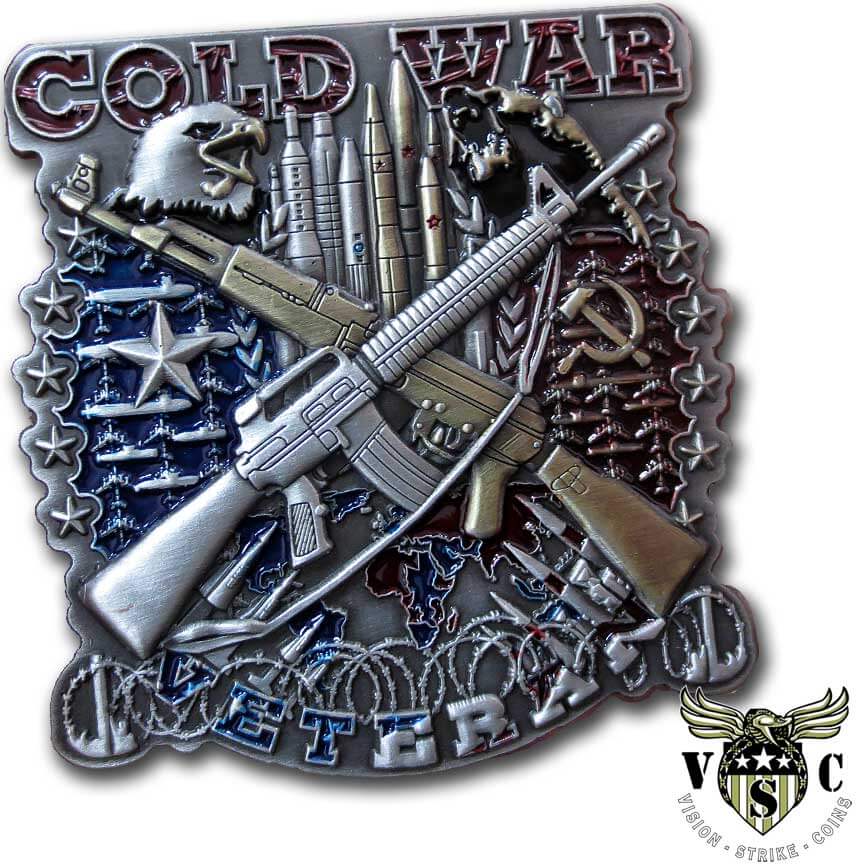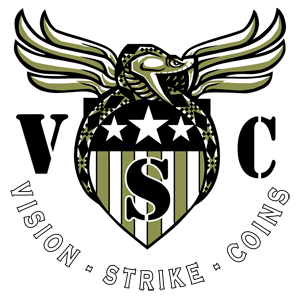The Cold War was a state of political and military tension between the Western powers, led by the United States and its NATO allies, and the Eastern powers, led by the Soviet Union and its allies, that lasted from the end of World War II in 1945 to the collapse of the Soviet Union in 1991.
The conflict was characterized by an intense geopolitical and ideological struggle between the two sides, but did not result in direct military action between the major powers. We honor our Cold War veterans with these Cold War Veteran Custom Engraved Challenge Coin.
During the Cold War, the US and the Soviet Union engaged in a massive arms race, as each side sought to gain a military advantage over the other. The two sides also competed for influence and control in various regions of the world, often supporting proxy wars in places like Vietnam, Afghanistan, and Latin America.
The Cold War had a profound impact on global politics and economics, shaping the modern world in many ways. The conflict led to the rise of the United States as a superpower, and to the spread of democratic ideals and capitalism around the world. At the same time, the Soviet Union’s defeat in the Cold War marked the end of the communist ideology as a dominant force in global affairs. The Cold War remains an important subject for historical study and understanding, and continues to influence international relations to this day.
History Of The Cold War
The history of the Cold War can be divided into several key phases:
- Origins (1945-1949): After World War II, the US and the Soviet Union emerged as the two dominant powers in the world, but with vastly different political systems and ideologies. Tensions between the two powers gradually increased as the Soviet Union sought to expand its influence in Eastern Europe, while the US sought to contain communism and prevent its spread.
- The Height of Tension (1950-1962): The Cold War reached its peak during this period, with a series of significant events that increased tensions between the US and the Soviet Union. These included the Korean War, the development of nuclear weapons by both sides, and the Cuban Missile Crisis.
- Détente (1963-1979): In the 1960s and 1970s, the US and the Soviet Union engaged in a period of reduced tensions, known as détente. During this time, the two sides signed several arms control agreements and made efforts to reduce tensions through diplomatic means.
- The End of the Cold War (1980-1991): The 1980s saw a revival of tensions between the US and the Soviet Union, but by the end of the decade, the Soviet Union was facing serious internal problems and was no longer able to sustain its military and economic power. The eventual collapse of the Soviet Union in 1991 marked the end of the Cold War.
The history of the Cold War is characterized by a complex web of political, economic, military, and cultural events and developments, and continues to be studied and analyzed by historians, political scientists, and other experts. The impact of the Cold War on global politics, economics, and culture is still felt today, and its legacy continues to shape the world in many ways.

For our Cold War Veetrans we designed a challenge jsut for you. It can be found here.
